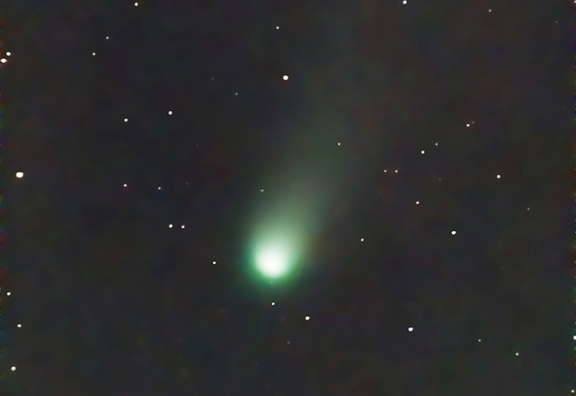
Skywatch: A solar eclipse April
The marquee event this April is, without a doubt, the solar eclipse on April 8. Millions and millions of skywatchers, including yours truly, have waited a long time for this! Much of North America and the United States, including Minnesota and Wisconsin, will see at least a partial eclipse as the moon crosses in front of the sun. There’ll be a total eclipse along a nearly 125-mile-wide path that’ll reach central Mexico in the late morning, crossing into Texas in the early afternoon, and then heading northeast into the Ohio River Valley, upstate New York, Quebec, Canada, and New England, finally exiting the continent through the Canadian Maritimes in the late afternoon. The closest the path of totality comes to Minnesota and Wisconsin is less than a day’s drive away in extreme southern Illinois. If you’re hesitating about making the trip, keep in mind that the next eclipse across such a large part of North America won’t happen again until 2045.
I’ll have more on the eclipse next week in Skywatch.
As far as nighttime stargazing in April, there’s a trade-off. Overall, spring nights gradually get warmer, but they’re also getting shorter. On top of that, most of the world has gone to daylight saving time. You’re forced to begin your stargazing adventures later in the evening, but it’s still worth waiting for!
In early April, the bright winter constellations are still on full display in the western half of the sky. Orion the Hunter is the leading player. His belt, made up of three bright stars in a perfect row, jumps out at you. Nowhere else in the night sky will find anything like it. It’s easy to envision the stars of the constellation Orion outlining a muscular man’s torso with a tight waistline. The very bright star Rigel marks the left knee of the mighty celestial hunter. Betelgeuse, a bright star with a reddish hue, resides at Orion’s right armpit.
(Mike Lynch)
Surrounding Orion is his posse of bright constellations, including Taurus the Bull, Auriga the Chariot driver turned goat farmer, Gemini the Twins, and Canis Major and Canis Minor, Orion’s large and small hunting dogs, respectively. The brightest star in the night sky is Sirius, marking the nose of Canis Major. This month is the swan song for Orion’s gang. As April slides toward May, Orion and his stellar cast will open each evening closer and closer to the western horizon. By early May, many of these winter shiners will already be below the horizon as the evening begins.
Meanwhile, in the eastern sky, the spring constellations are on the rise. Leading the way is Leo the Lion, a rare constellation that really looks like what it’s supposed to be. Leo comes in two parts. Leo’s upper right side resembles an easy-to-see backward question mark leaning to the left. That question mark outlines the chest and head of Leo the Lion. At the bottom of the question mark is the bright star Regulus, the heart of the lion. To the lower left of the question mark is a reasonably bright triangle that makes up Leo’s rear and tail.
Comet Pons-Brooks (Mike Lynch)
There’s a definite shortage of planets in the night sky this month as most of them are too close to the sun from our viewpoint on Earth. During the first half of April, Jupiter briefly appears in the low western sky during evening twilight. Shortly after twilight fades, Jupiter slips below the horizon. A little to the lower right of Jupiter in the very low west-northwest sky, you might also see a faint comet with a small telescope, binoculars, or maybe even the naked eye in the dark countryside, especially during the first half of April and especially in the darker countryside. Around the first few days of April, Comet 12P/Pons-Brooks will be just to the left of the moderately bright star Hamel in the small constellation Aries. Between April 10 and 15, the comet will be just to the lower right of Jupiter. On April 10 the new crescent moon joins in, perched just above Jupiter. Don’t feel bad though if you can’t spot the comet. It’ll be tough to find in the evening twilight.
The Lyrid meteor shower will peak the night of April 21-22. It’s a moderate meteor shower but the best one since early January. Unfortunately, this year, the Lyrids will be washed out by the full moon’s bright light on April 23. By the way, the full moon in April is nicknamed the Pink Moon, but I guarantee the moon will not be sporting a pinkish glow.
Enjoy the solar eclipse this month, but don’t forget about the tremendous nighttime stargazing available every clear evening!
Mike Lynch is an amateur astronomer and retired broadcast meteorologist for WCCO Radio in Minneapolis/St. Paul. He is the author of “Stars: a Month by Month Tour of the Constellations,” published by Adventure Publications and available at bookstores and adventurepublications.net. Mike is available for private star parties. You can contact him at mikewlynch@comcast.net.
Starwatch programs
Monday, April 1 at Alimagnet Park in Burnsville, 8-10 p.m. For more information and reservations, call Dakota County Library at 651-450-2900 or visit www.co.dakota.mn.us/libraries/programs.
Tuesday, April 2, 8-10 p.m., Sandburg Learning Center in Golden Valley, Minn. For more information or reservations, call 763-504-8028 or visit https://ced.rdale.org/.
Wednesday, April 3 at Kaposia Library in South St. Paul, 8-10 p.m. For more information and reservations, call Dakota County Library at 651-450-2900 or visit www.co.dakota.mn.us/libraries/programs.
Thursday, April 4 at Whitetail Park in Farmington, 8-10 p.m. For more information and reservations, call Dakota County Library at 651-450-2900 or visit www.co.dakota.mn.us/libraries/programs.
Related Articles
Skywatch: The wily rabbit of winter
Skywatch: Celestial signs of spring
Skywatch: The winter hounds
Skywatch: Winter constellations are marching out
Skywatch: Orion carries so many stories
